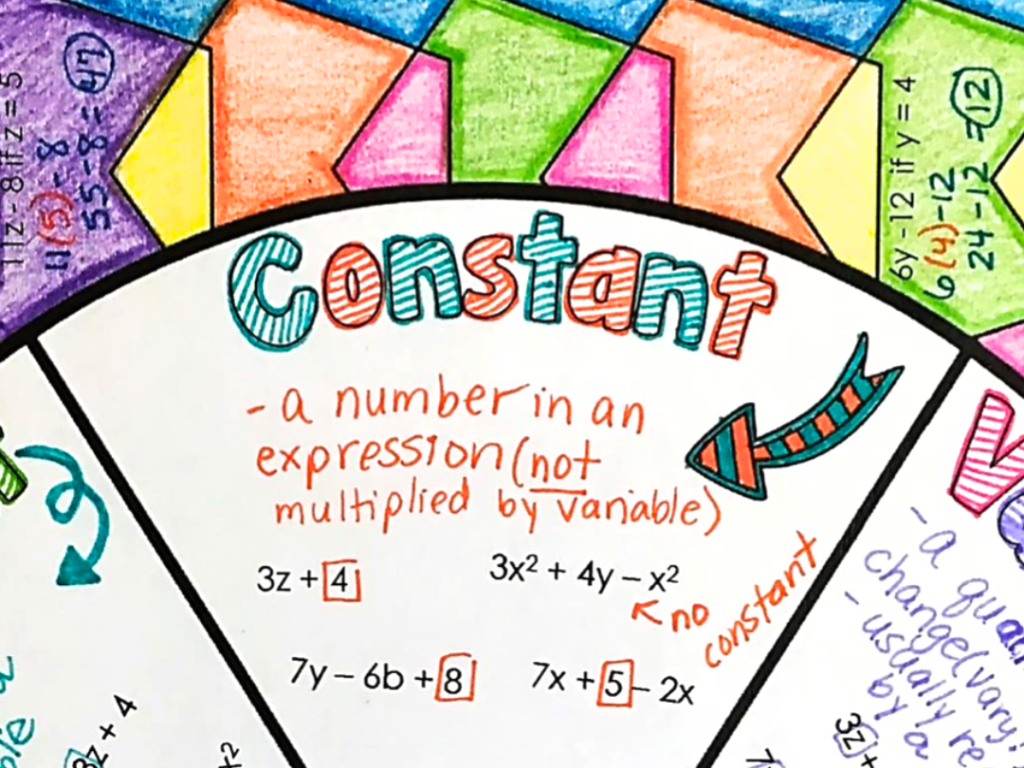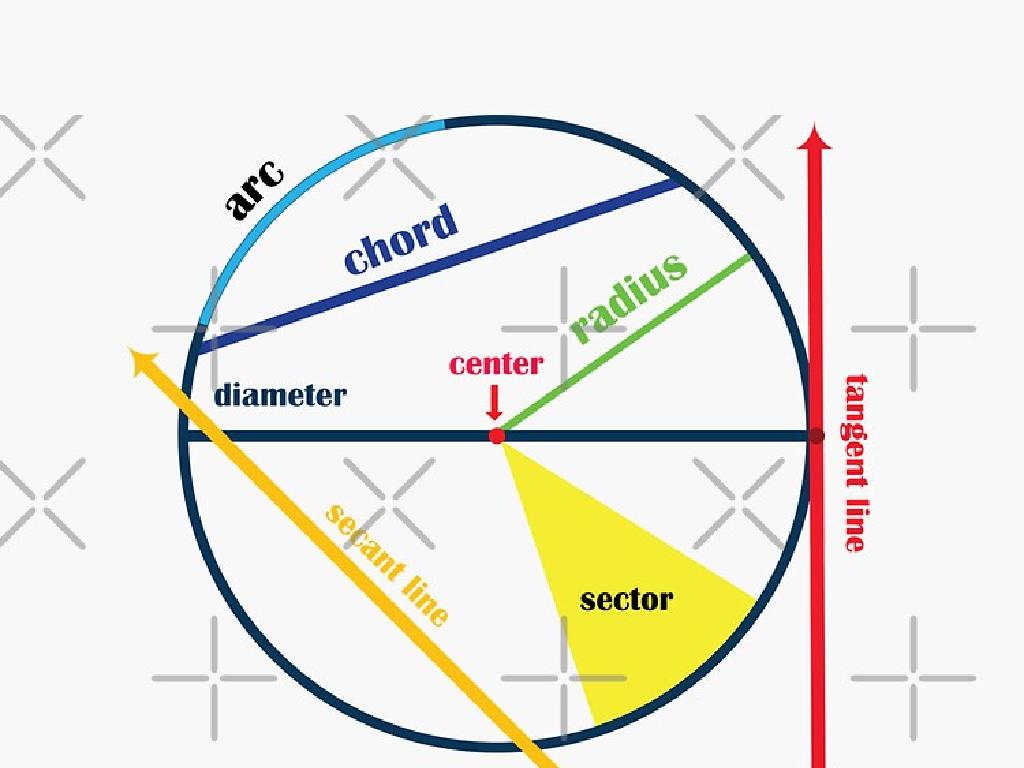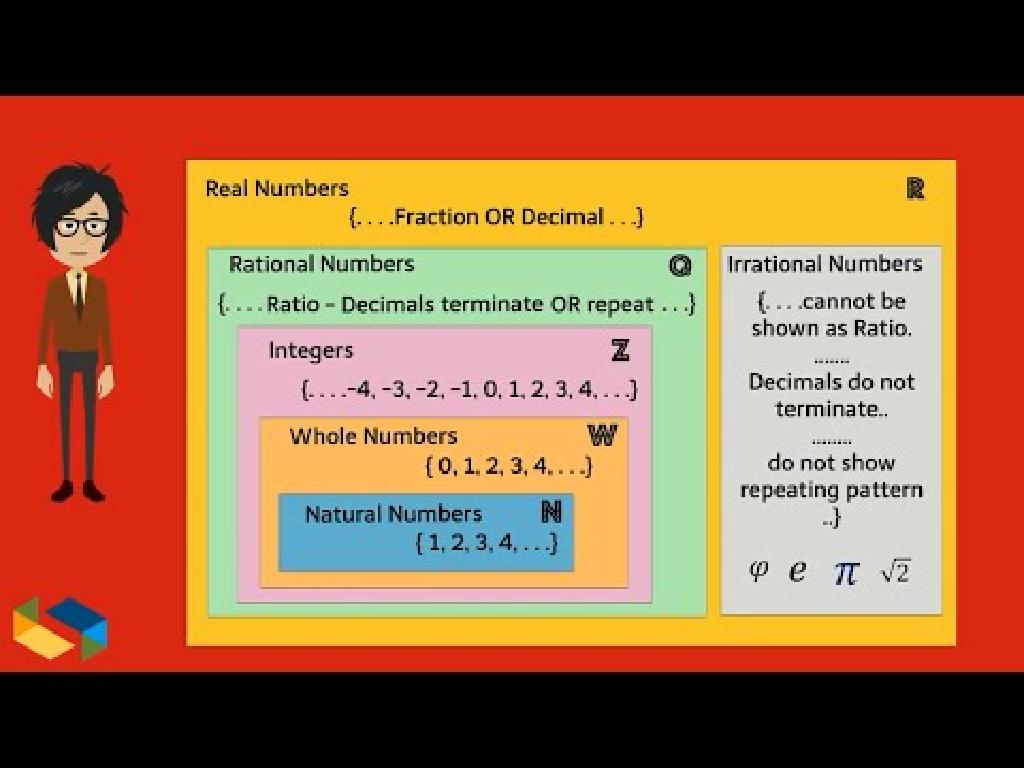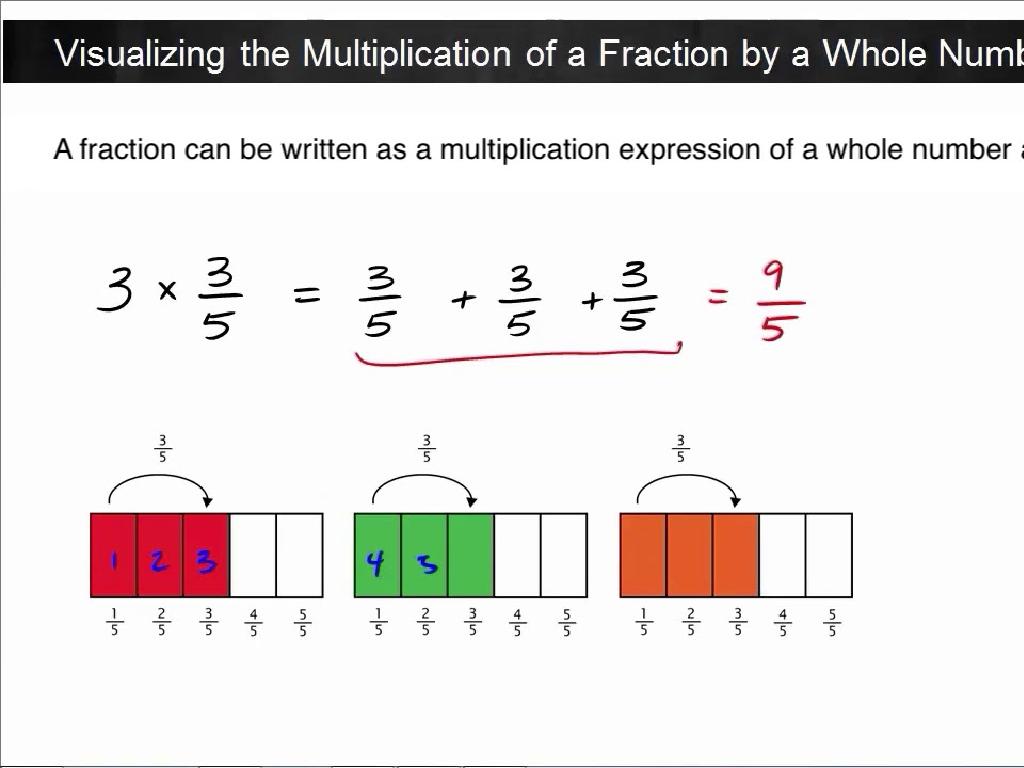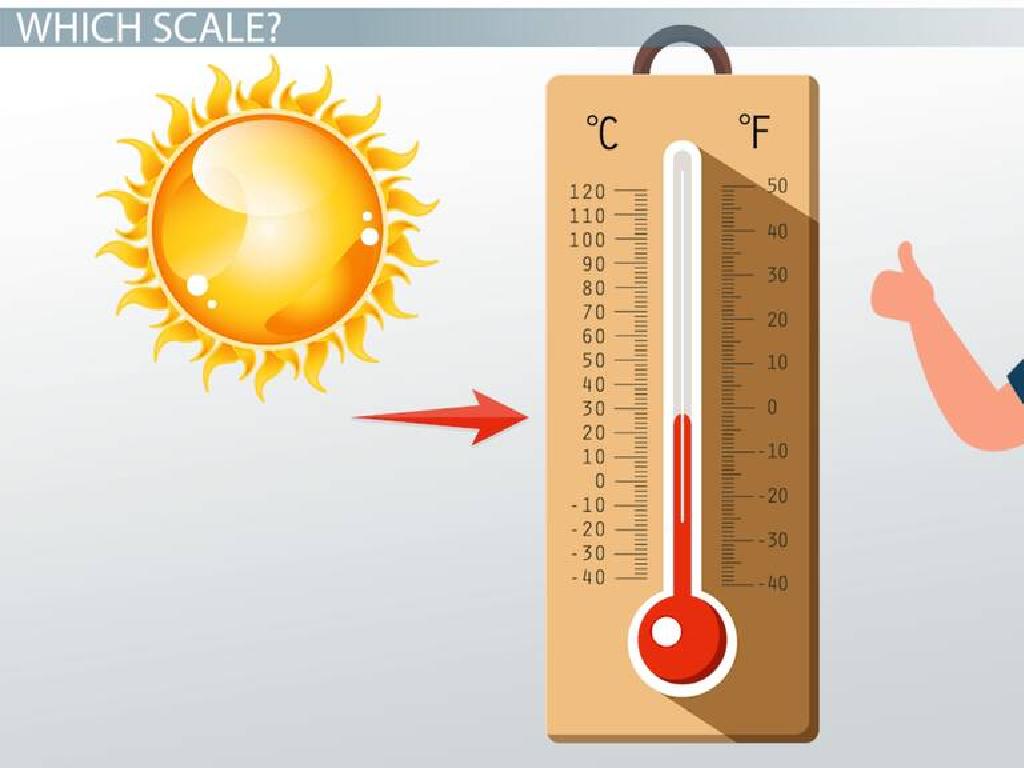Interpret Graphs Of Proportional Relationships
Subject: Math
Grade: Eighth grade
Topic: Proportional Relationships
Please LOG IN to download the presentation. Access is available to registered users only.
View More Content
Interpreting Graphs of Proportional Relationships
– Define proportional relationships
– A relationship where two quantities increase at the same rate.
– Proportionality in daily life
– Examples: recipes, map scales, and buying in bulk.
– Graphs visualize relationships
– A straight line through the origin shows a proportional relationship.
– Interpreting graphs effectively
|
This slide introduces the concept of proportional relationships and their importance in both mathematics and real-life situations. Begin by defining proportional relationships as situations where two variables change at a constant rate relative to each other. Provide relatable examples such as following a recipe, using a map scale for distances, or purchasing items in bulk to illustrate proportionality in everyday life. Explain how graphs with straight lines passing through the origin represent these relationships visually, making it easier to understand and interpret the constant rate of change. Emphasize the skill of reading these graphs to predict outcomes and make calculations based on the visual data presented.
Understanding Proportional Relationships
– Define proportional relationship
– A relationship where two quantities increase or decrease at the same rate
– Constant rate of change
– For every x increase, y increases by a constant amount
– Speed-Distance example
– If a car travels at a constant speed, the distance covered is proportional to the time traveled
– Recipe adjustment example
– Doubling ingredients in a recipe keeps the flavor proportional to the original
|
This slide introduces the concept of proportional relationships, a fundamental component of algebra and a key concept for eighth-grade mathematics. Begin by defining a proportional relationship as one where two quantities vary at a constant rate. Explain that this constant rate of change is a cornerstone of understanding proportionality. Use relatable examples such as the relationship between speed and distance to illustrate the concept. For instance, if a car travels at a constant speed, the distance covered will be directly proportional to the time traveled. Another example is adjusting recipes, where doubling the ingredients will double the output, maintaining the same taste and consistency. Encourage students to think of other examples where they encounter proportional relationships in their daily lives.
Graphing Proportional Relationships
– Plotting proportions on graphs
– Use a consistent scale to plot points representing the relationship.
– Slope significance in proportional graphs
– Slope equals the rate of change; in proportion, it’s constant.
– Proportional relationships from tables
– Look for a constant ratio in tables to find proportional relationships.
– Interpreting graphs for real-world problems
|
This slide aims to teach students how to represent proportional relationships using graphs. Start by explaining the process of plotting points on a graph using a consistent scale to ensure accuracy. Discuss the concept of slope and its importance as the constant rate of change in proportional relationships. Show how to identify proportional relationships in tabular data by finding a constant ratio between corresponding values. Finally, apply these concepts to solve real-world problems, reinforcing the practical application of interpreting graphs. Encourage students to practice plotting points and drawing lines that represent proportional relationships and to look for patterns in tables that indicate proportionality.
Analyzing Graphs of Proportional Relationships
– Proportional vs. non-proportional graphs
– Proportional graphs are straight lines through the origin.
– Interpreting unit rate from graphs
– Unit rate is the graph’s slope, or rise over run.
– Identifying constant of proportionality
– Constant of proportionality is the slope in y=kx.
– Practice with different graphs
– Use sample graphs to find the constant of proportionality.
|
This slide is aimed at helping students distinguish between graphs that represent proportional relationships and those that do not. Emphasize that proportional graphs will always be straight lines that pass through the origin (0,0). Explain that the unit rate can be interpreted from the graph’s slope, which is the vertical change (rise) over the horizontal change (run). The constant of proportionality is the value of the slope in the equation y=kx, where k is the constant. Provide practice by presenting various graphs and asking students to identify the constant of proportionality, reinforcing their understanding of how to interpret these graphs in the context of proportional relationships.
Graphs in Real Life: Proportional Relationships
– Apply graph interpretation to real-world issues
– E.g., comparing distance vs. time for different speeds
– Use graphs for future predictions
– Predict outcomes by analyzing trends in the graph
– Activity: Graph creation from scenarios
– Students will create graphs based on real-life situations provided
|
This slide aims to show students the practical application of interpreting graphs in real-world contexts, such as understanding speed by looking at a distance versus time graph. Emphasize how graphs can help us predict future events or outcomes by recognizing patterns and trends. For the activity, provide students with various scenarios, such as budgeting weekly allowance, tracking daily temperatures, or recording exercise progress, and ask them to create a proportional graph representing the scenario. This will help them understand the concept of proportional relationships and how to visualize them. The teacher should be prepared to guide students through the graph creation process, ensuring they understand how to plot points and draw lines that represent the proportional relationship in their scenario.
Class Activity: Graphing Proportions
– Discuss real-life proportional relationships
– Create a table of values
– Use your example to list input-output pairs
– Plot values on a graph
– Graph the pairs to see the proportional relationship
– Present findings to the class
|
In this activity, students will work in pairs to identify a proportional relationship from their everyday experiences, such as the cost of fruit per pound or speed over time. They will then create a table of values representing this relationship, plot these values on a graph, and present their findings to the class. This exercise will help them visualize how proportional relationships work and understand their practical applications. For the teacher: Prepare graph paper and writing materials. Suggest examples if students are struggling to find their own. Walk around to assist pairs as needed. Possible activities: 1) Comparing gas consumption to miles driven, 2) Exploring the relationship between hours studied and test scores, 3) Examining the cost of items per unit, 4) Investigating the speed of a runner over time, 5) Analyzing the relationship between the number of sales and profit made.
Wrapping Up: Proportional Relationships
– Recap: Proportional Relationships
– Homework: Find & Graph a Real-Life Example
– Look for examples like speed/distance or recipe ingredients
– Document the proportional relationship
– Use a table to record your data before graphing
– Share your findings next class
|
As we conclude today’s lesson, ensure students have a solid understanding of proportional relationships and how they can be represented graphically. For homework, students are tasked to find a proportional relationship in their daily life, such as the cost of multiple items or the time spent on a task vs. the work completed. They should graph this relationship, noting the constant rate of change. Encourage creativity and real-world application. In the next class, students will share their examples, fostering peer learning and reinforcing the concept of proportionality in a practical context.

